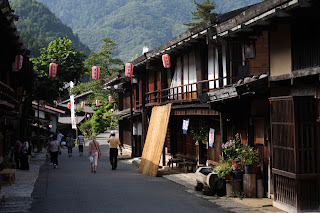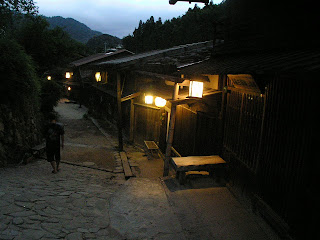Shirakawa-go [白川郷, White River Old-district]
The Historic Villages of Shirakawa-gō and Gokayama are one of Japan's UNESCO World Heritage Sites. The site is located in the Shogawa river valley stretching across the border of Gifu and Toyama prefectures in central Japan.
These villages are well known for their houses constructed in the architectural style known as Gasshō-zukuri (合掌造り). The Gasshō-zukuri, "prayer-hands construction" style is characterized by a thatched and steeply slanting roof resembling two hands joined in prayer. The design is exceptionally strong and, in combination with the unique properties of the thatching, allow the houses to withstand and shed the weight of the region's heavy snowfalls in winter.
Kurashiki Bikan historical quarter
The modern city of Kurashiki was founded on April 1, 1928. Previously, it was the site of clashes between the Taira and Minamoto clans during the Heian period. It gradually developed as a river port. During the Edo period, it became an area directly controlled by the shogunate. Distinctive white-walled, black-tiled warehouses were built to store goods. During the Meiji Restoration (Japan's Industrial Revolution period), factories were built, including the Ohara Spinning Mill which still stands as the nostalgic tourist attraction Ivy Square.
Tsumago-Juku [妻籠宿]
During the Edo period, Tsumago was the forty-second of the sixty-nine post towns, which connected Edo (present-day Tokyo) with Kyoto. Prior to becoming part of the Nakasendō, it was the tenth of elevenstations along the Kisoji, a minor trade route running through the Kiso Valley. As such, it was a relatively prosperous and cosmopolitan town, with an economy based on currency. It fell into obscurity and poverty, however, after the completion of the Chūō Main Line railway, which bypassed Tsumago.



























0 件のコメント:
コメントを投稿